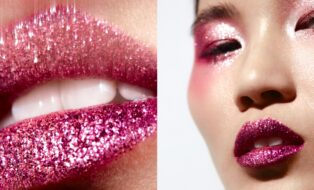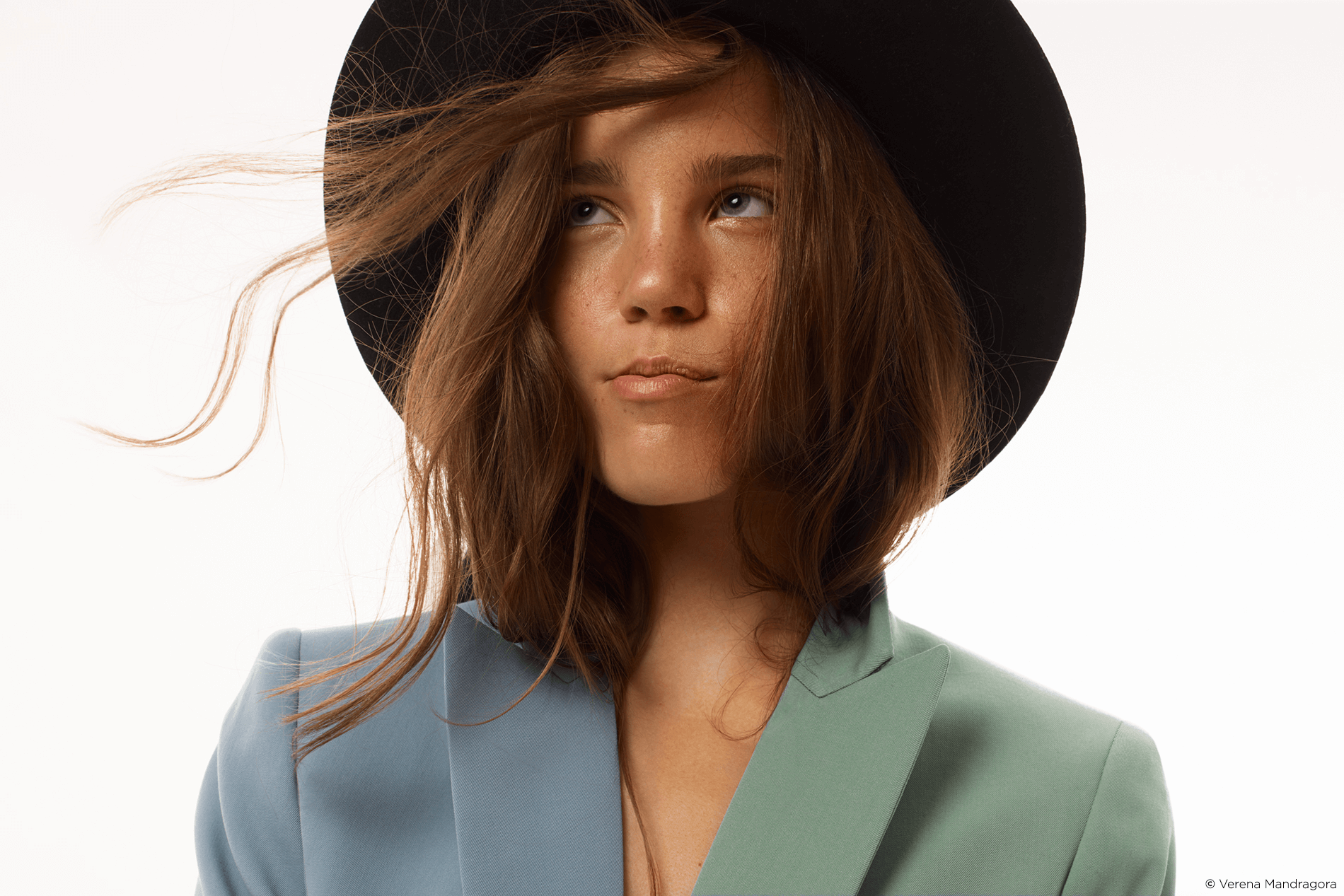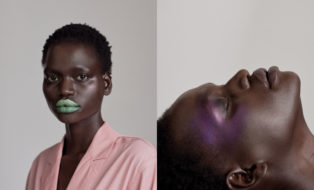Once on the verge of giving up on his dream of becoming a photographer after a particularly disheartening experience at a photoshoot, recent photography graduate Ville Mäkäräinen is now more determined than ever to carve out a space for himself in the world of photography.
We spoke to Ville about how his love for skateboarding and run on Finland’s Next Top Model led him to where he is today and the anxiety and excitement of taking the leap into a new profession.
I’d like to start by asking you about your origin story. How did you get into photography?
It all started when I was a kid and skateboarding a lot. Me and my friends wanted to get new tricks on tape and as the creative child, I was often the one picking up the camera. It was my dad’s camera, which was probably one of the first digital cameras that could record video.
Fisheye lens is a big deal in skateboarding, and I remember taping up a peephole right on the lens, probably leaving a ton of scratches. We used that camera a lot and after abusing it for a while, my dad got a new DSLR which I later stole again for my projects. After a few years of mostly doing videos, my interest in photos started growing.
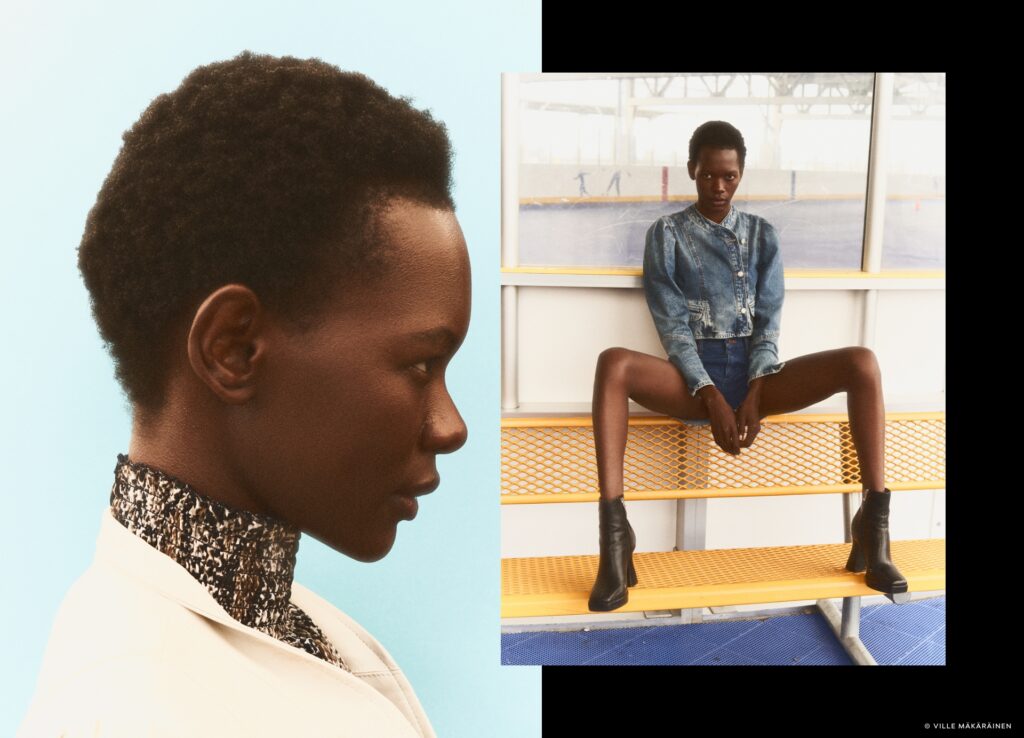
I did my military service in a unit called Combat Camera, basically being a war photographer. There we travelled around Finland participating in different trainings and documenting them. I really enjoyed my time there and my interest in photography just kept on growing.
Right before the military, I attended a TV show called Finland’s Next Top Model. My modelling career didn’t really blow up after it but that’s where I got introduced to the world of fashion photography. And I’ve kept that with me ever since and it is everything I want to do nowadays.
You’ve said that you weren’t sure about getting a photography education. Now, you’ve just graduated from Fotoskolan STHLM in Sweden. What made you change your mind?
My earlier experiences of school were really bad. I remember promising myself after high school to never do anything school related ever again. Once I also got to do a lot of photography and be around it for a while, I started romanticizing the word “self-taught”.
Photography educations were disappearing from Finland, and I was thinking that no one really needs them anyways. Everything can be learned from YouTube and how could anyone even teach me how to be creative. Oh boy was I wrong.
Then after my first time assisting, I realized how much there was to be learned. I remember being so disappointed in myself afterwards that I ended up taking a year-long break from photography.
I started working as a flight attendant and enjoyed it for sure. But when the pandemic hit, I felt such a relief being laid off. I moved to Sweden to be together with my partner and felt like I needed something to keep me active. I also had zero friends, so I had to find a solution for all that.
Then the uncomfortable idea of applying to a school arose and after a few hours of Googling I had Fotoskolan STHLM in front of my eyes. I was still doubting it being a good idea, but I applied anyway. I’m glad I did because I can tell you that it was one of the best decisions of my life. It got me going in the right direction with photography and closer to my dreams for sure. Without that school I would probably be back flying.
Follow along Ville’s editing process to transform the colors in his photo.
How did the education at Fotoskolan STHLM impact your journey?
In tons of different ways that I didn’t even think it would. First of all, it brought me to a group of amazing and talented photographers – my classmates. I could always get my ideas to another level by brainstorming with them and I felt like the creative atmosphere in our class really affected the way of my working. School made me ask myself questions, why I do something in the way I do and look at my photos in a more critical way.
During my education was also the time I got familiar with Capture One and adopted it as my favorite tool in the process of making photos.
I learned that there are many ways of working in photography, for example assisting, which I’ve now started to see as a great career option and an amazing way to grow my wings in this industry. I feel like I can almost get the same kick as an assistant as I would as a photographer. I see myself working mainly as an assistant for a few years from now on while I build my portfolio to then become a full-time photographer.
You’ve said that you try to express beauty in weird and unconventional ways in your photos. Could you elaborate on that?
There are so many ways to express beauty and I am experimenting with ways that maybe are not the most “typical” ways of doing it. I don’t mind if the make-up gets messy or the hair is all over the place, those pictures I often end up liking the most.
I can’t really say what beauty exactly is, but I guess everyone sees it a bit differently. Some might think beauty is perfect lines and smooth surfaces. In my eyes it is when things get a little rough around the edges.
I guess some of it might come from me trying to prove something to myself. I had severe acne as a teenager that left my face full of scars. During my short career of modelling, that was something that made me really insecure. In my work I’m basically battling with my own issues of self-acceptance.
How would you describe your style?
It is always difficult to look at my pictures from a “third person view”, but I could say I’m quite experimental in my photography. It might be because of my journey being in an early stage still finding its form, but I love experimenting with new ideas and techniques and I hope I always will. I feel like I get inspired by so many things and I want to try them all at once.
I could also describe my style as being surrealistic. Usually, I’m not satisfied with just a picture and usually go further in post-production with Photoshop or even a pair of scissors.
One of my big inspirations has been a French photographer Claude Cahun who made a great impact in my way of processing pictures.
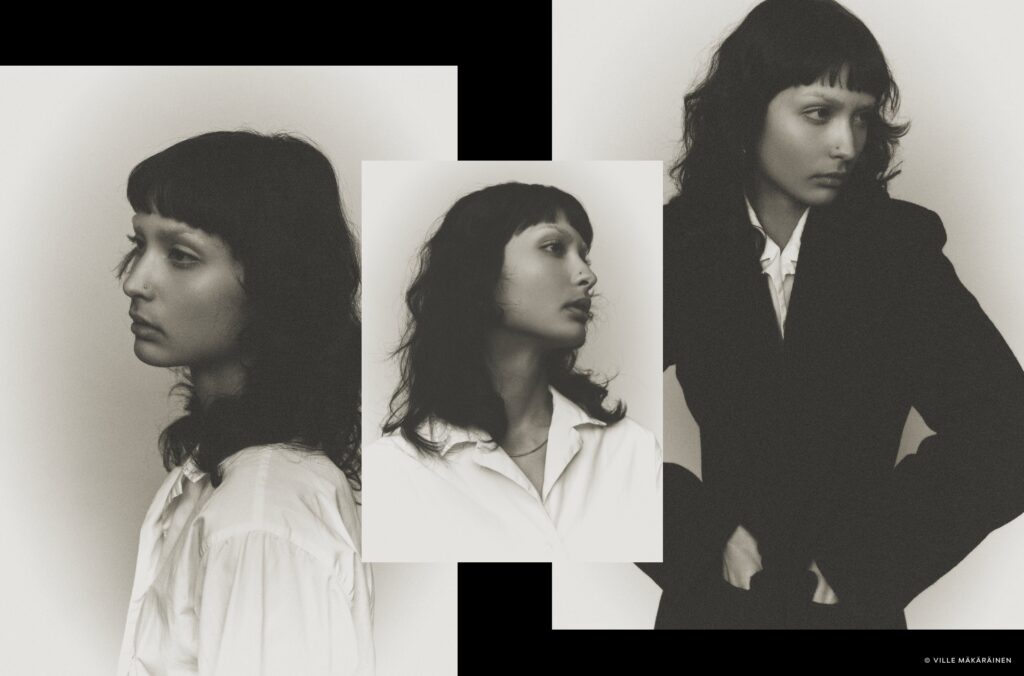
You’ve focused on different aspects of photography during your journey, from being lead photographer to assisting and digiteching, you’ve done a bit of everything. How did all these experiences influence your practice?
Trying all these roles has helped me to relate and understand everyone involved. As an assistant I can put myself in photographer’s shoes and understand how stressful it can sometimes be when you feel like everything is on your shoulders.
As a photographer I get the importance of communication and want to be clear about everything during the whole shoot and also appreciate the difference it makes to the whole workflow when all the files are in the right places with the right names. Everyone plays such a role and a missing member in the team is like running without shoes, it is possible but definitely painful.
I’ve also discovered how important making a look that is applied to the pictures during the shoot is. As the camera is tethered and images roll in, your team will already get an idea of the final product when there is a look that kind of covers the RAW file. It is also easier to make changes to the look and tweak it to the direction everyone hoped for when everyone in the team is present.
Shifting gear now, what role does Capture One play in your process?
I have Capture One as a huge part of my process and can’t think of working without it. As an assistant and digitech, it is where I spend most of my time.
I start the shoot with creating a new session and making the folders we need. During the shoot I make sure everything looks as it should and that the file names are right and everything ends up in the right place.
When it’s my own project I always make a look on the pictures that is as close to the planned final result as possible. Then in the end I process the images from Capture One to the desired format.
Also, I have never experienced any other good way of tethering. In the work I do, which is mostly in studio, tethering is essential, which makes this program a must have. Capture One has such a great variety of tools so I can use it almost from start to finish during the process. It is only the more advanced retouch I do in Photoshop. I would say that I do 80% of the photos in Capture One.
What aspects of working with the software do you like the most?
The software is handy in many ways, and I appreciate its versatility and smooth interaction with other programs. But I’m personally having the most fun with the creative part of Capture One which is making looks and manipulating colors.
The interface is easy on the eye and yet has so many functions that I feel like I still have a lot to discover. And that’s what makes it so fun, the fact that no matter how hard I push it, it still has a lot to give. The way it handles color is amazing and being able to affect every little detail in kind of a playful way makes my inner nerd cry of happiness.
Also, I have to mention the way Capture One organizes all the files in the session folders is just underrated. It helps the workflow a lot and makes doing backups better. Also adding and removing folders in the capture folder is super easy and works great together with Finder.

In your opinion, what are some of the most inspirational photographers out there right now?
For the past few years, I have been really inspired by a Paris-based Finnish fashion photographer Osma Harvilahti. I love the color palette in his work and how the pictures feel alive. He also has this surrealistic touch on his work that really makes the photos interesting, and it is always exciting to see what he comes up with. I think it is also him being a fellow Finn that makes me appreciate him a little extra.
On the analogue side I have gotten a lot of inspiration from a Danish fashion photographer Daniel Stjerne whose peaceful style got me thinking that less is more. Then on the digital side the New York-based fashion and beauty photographer Mikael Schulz. His creativity shines during the shoots, and he brings the best sides out from everyone. His crisp and playful style really influenced my photography especially on the beauty side. He is not only a great photographer but also a very inspiring human being.
Finally, what’s your advice for young photographers like yourself that are just starting out?
It feels funny to give advice to anyone being in a big need of it myself. But I guess what I’ve learned so far is how important it is to have fun. Sounds very obvious but I really have to remind myself of this quite often.
You probably chose this career because it is your dream job, so don’t get too corporate with it. Keep in mind why you’re doing it and let loose. Don’t be scared of screwing up because sooner or later you are going to do it. It is actually the best way to learn. If you really want to stand out, then there is no safe road. And if you’re in school right now then it is the best time to test your limits.
Also, what I struggled with a lot, and still do at times, is comparing myself with others, often to people who have been in the industry for a lot longer than I have. Don’t do that, it is only going to make you stressed and uninspired. Keep your eyes on your own road and again try to think why the people who inspire you are so amazing. They are most likely not trying to be like everyone else, so why should you.
Your mom was right, you are beautiful and amazing and with the talent you have you can do anything. You’re doing great sweetie!!
New to Capture One? Try it free of charge for 30 days here

